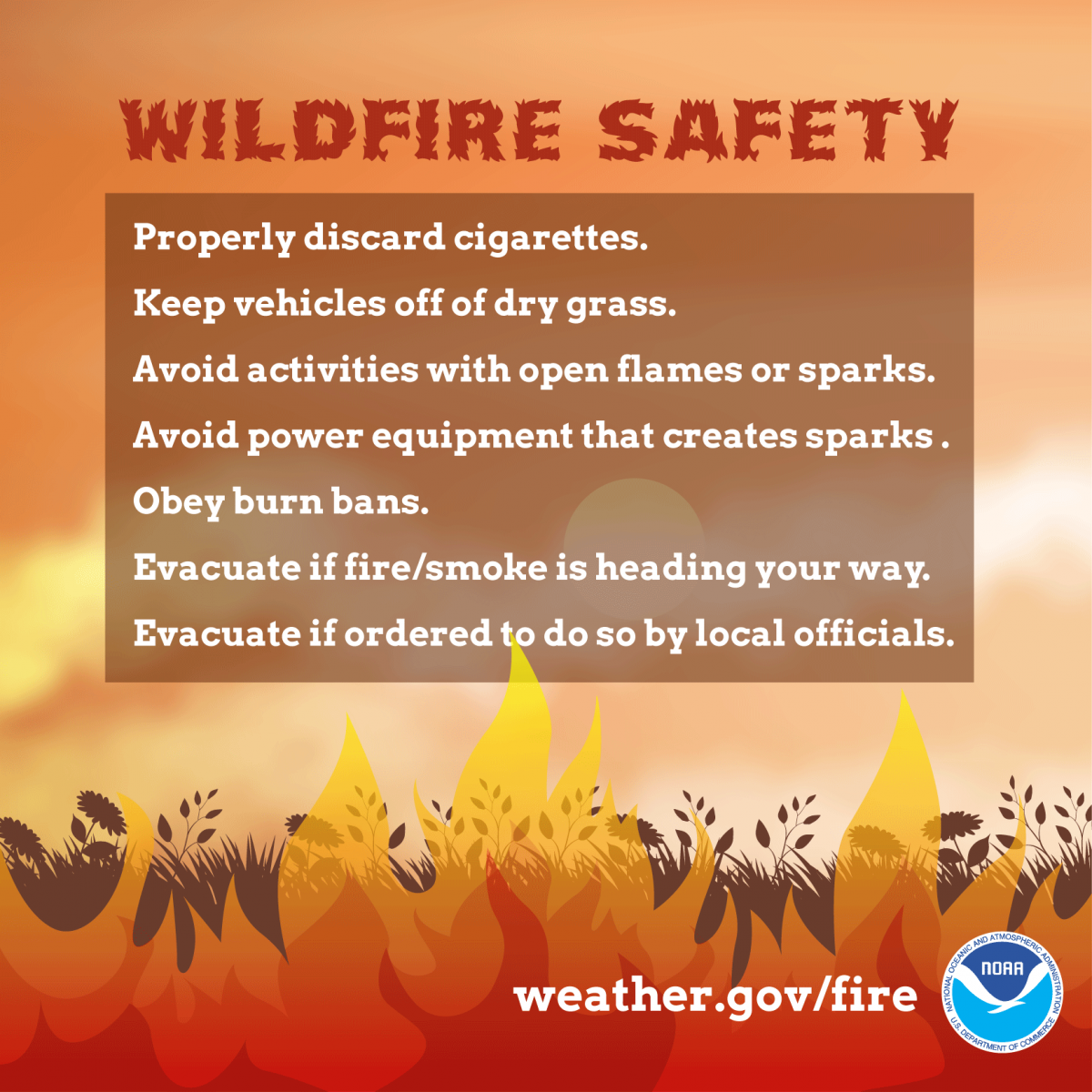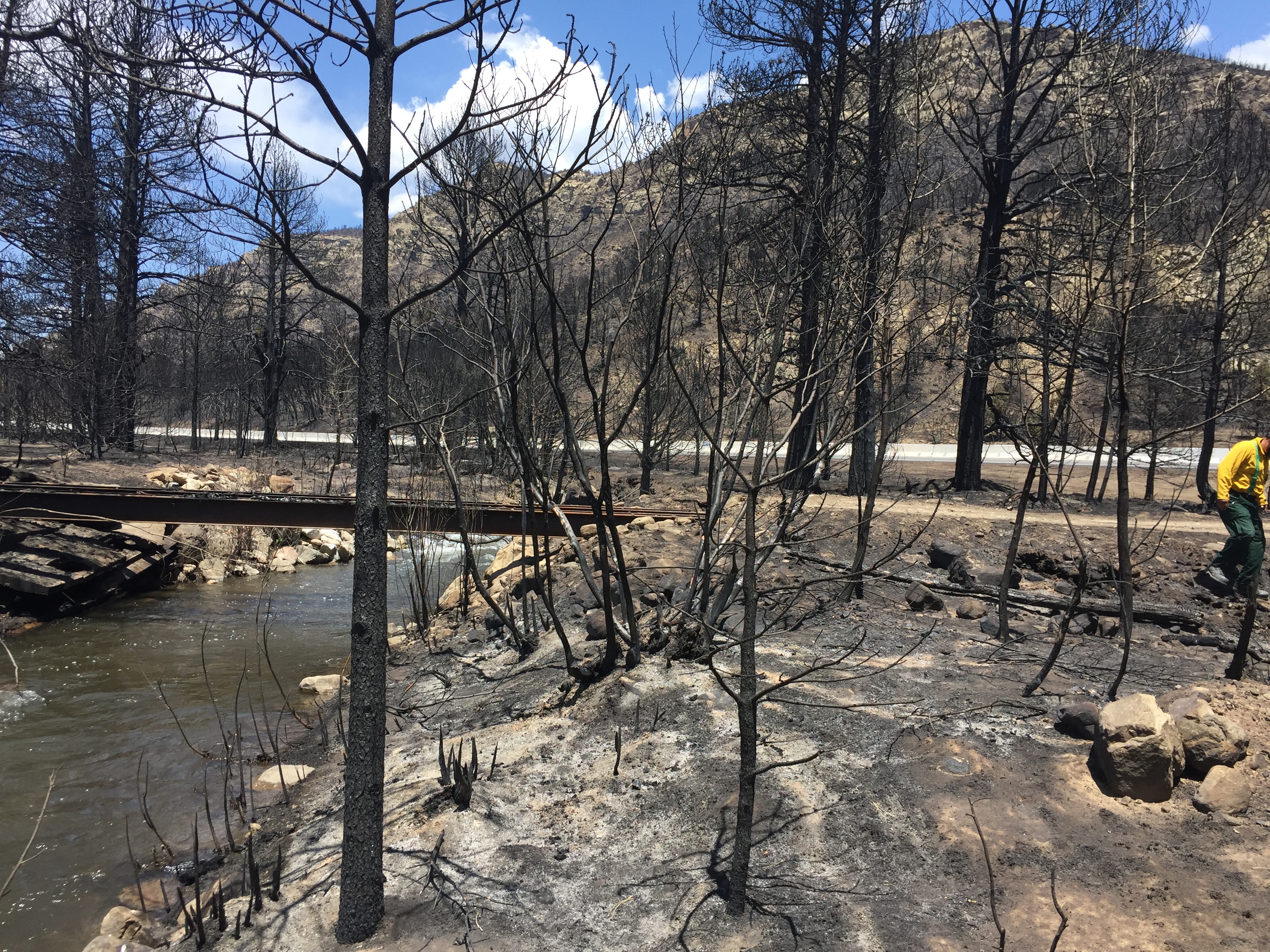
A wildfire is an unplanned fire that burns in a wilderness area. Wildfires quickly consume everything in their path from trees, vegetation, homes, and other structures. New Mexico is no stranger to the dangers of wildfires, and many homes have become casualties to these fires. Fortunately, there are steps you can take now to reduce your risk to a wildfire.
Ready...Most hazardous weather is forecast days in advance. Begin your preparations by paying attention to the weather forecast. The Key Impacts Graphic is a great product issued by the National Weather Service that highlights the potential for hazardous weather over the next seven days.
Set...If critical fire weather conditions are possible, then the National Weather Service will issue a Fire Weather Watch. This means that critical fire weather conditions are possible, but are not occurring or imminent. This alerts land managers and the public that upcoming weather conditions could result in extreme fire behavior.
Go! When critical fire weather conditions are occurring or are imminent, then the National Weather Service will issue a Red Flag Warning. This alerts land managers and the public to be extremely careful with open flames.
 |
 |
| When weather conditions are favorable for critical fire weather conditions, then a Fire Weather Watch will be issued. A Fire Weather Watch is a zone-based product based off of fire weather zones. It is issued at least 24 hours before critical fire weather conditions are expected to occur. | As critical fire weather conditions are occurring or become imminent, then the Fire Weather Watch will be upgraded to a Red Flag Warning. The Red Flag Warning is also a zone-based product based off of fire weather zones. |
Get to know your community. What is your community's history with wildfires? Learn about nearby shelters as well as evacuation routes. How will you receive information? Be sure that the Wireless Emergency Alert (WEA) System is activated on your phone. NOAA weather radio will also alert you in times of wildfires.
 |
Remove items around your home that can fuel a wildfire. Keep vegetation around your home to a minimum. Store combustible items away from your home. Have an outdoor water source that can reach any area of your home. If you are told to evacuate, then evacuate. Have an emergency kit ready to go in case you are ordered to leave. Be sure to include face masks that can protect you from smoke, and keep in mind the needs of each individual in your household. Don't forget any medications or assistive devices that you or anyone in your household may need. Don't forget the needs of pets! You may have very little time to gather belongings in the event of an evacuation. If you evacuate, leave your lights on so your house can be seen through thick smoke. Shut off your gas, and leave doors and windows unlocked to assist firefighters. If you are in your car and see a wildfire, stay in your car. Never try to outrun a wildfire. Keep your windows rolled up, your vents closed, and keep your headlights on. If you must stop, park away from vegetation and other wildfire fuels. |
 |
 |
| Burn damage caused by the Ute Park Wildfire of 2018 at Cimarron Canyon, New Mexico. Photos by Kerry Jones. | |
|
Only return home one you are told it is safe to do so. The threat doesn't end once the wildfire is contained. Wildfires dramatically alter landscapes, and your community now faces new dangers. Until vegetation is restored (which may take up to 5 years), there will be an increased threat for flash flooding on burn scars. |
|